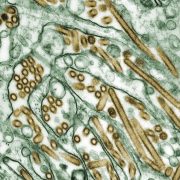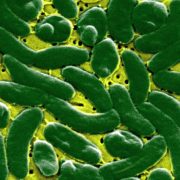Editor’s note: Tom Frieden, director of the US Centers for Disease Control and Prevention from 2009 to 2017, is president and chief executive of Resolve to Save Lives and senior fellow for global health at the Council on Foreign Relations.
The United States’ response to H5N1 – “bird flu” – has taken too long, showing how risky gaps in coordination and trust can be. With three cases reported in people in the United States and clusters in cattle herds from Michigan to Texas, Idaho to North Carolina, it’s clear that the virus is widespread among animals. To protect people, animals, and our economy and to restore trust in public health, we need to get this right.
We’ve seen H5N1 coming for more than 20 years. Although the challenge was smaller because of it size, Finland stopped H5N1 in animals before it spread to humans last summer. This story, among a half dozen outbreaks that never made headlines, is featured in our new Epidemics That Didn’t Happen report.
The U.S. has done a lot, including scaling up test production, evaluating vaccines, tracking wastewater for related viruses, and providing information about efforts. Finland did three things particularly well; all are relevant to the U.S. response to the virus.
Rapid response. Within 24 hours of the first cases being reported on a mink farm, Finland confirmed that the animals tested positive for highly pathogenic avian influenza H5N1, which was known to be circulating among birds in Finland, just at the virus has been circulating among birds in the U.S. for the past two years. Human and animal health specialists worked together immediately to track infections, including testing at-risk workers on farms with infected animals.
In the United States, H5N1 has been spreading among cattle since at least late last year. Even today, the United States doesn’t know the extent of spread among animals or humans due to insufficient testing and tracking. The 7-1-7 target for outbreak detection and response should be our guiding principle: seven days to detect a suspected infectious disease outbreak, one day to notify public health authorities, and seven days to complete the initial response. This approach can halt outbreaks before they spread. Finland’s response met this target. In the U.S., instead of 7 days, the time from emergence of H5N1 in cattle to detection was more like 100 days, and it’s not clear we’ve met the 7-day target for initial response even months into the outbreak. Doing so requires communication and public health measures in the affected communities and an effective coordination mechanism. We must improve the connection of human and animal health and strengthen animal public health.
Trust. Farmers already had a high level of trust in the Finnish Food Authority after years of successful programs, and had launched a surveillance program that resulted in rapid notification of unusual symptoms among their animals. Farmers were immediately reimbursed for the value of animals that needed to be culled to stop disease spread, strengthening trust of the government in the farming community. This trust will no doubt help Finland’s next move: vaccinating frontline workers against H5N1. They are the first country to do so.
Trust toward the United States government is low, especially among rural Americans who are on the front line of these outbreaks. In May, the US Department of Agriculture announced payments to farms to help stem spread in dairy cattle, including covering veterinary expenses for cattle testing positive for H5N1, compensating farms that supply personal protective equipment to their workers, and paying farm workers to participate in USDA and CDC studies. We may need to do more to protect our nation’s agricultural sector.
Coordinated government response. Human health and agriculture officials in Finland coordinated closely, paving the way for a rapid, effective response. The joint response strengthened detection, collaboration of industry groups, and protection of workers from infection. Finland rapidly passed new legislation to ensure it had the authority to implement effective control measures.
In the United States, government agencies have had rocky relationships given varying priorities, legal authorities, agility and politics. There are multiple agencies involved: USDA monitors cattle health, US Food and Drug Administration monitors milk safety and the CDC monitors diseases in humans, including from animal exposure. Coordination seems to be improving, but any directives from the government should be crafted to the specific needs of each community; national mandates will likely not be practical given our country’s size and diversity.
We have a lot to learn, and no time to lose. First, localities, states and national authorities must work with one another. This will require multiple federal agencies – including CDC, USDA, FDA – and their state counterparts to share information transparently and in real time with each other and with the public. Second, Congress needs to provide resources to prevent and respond to pandemic risks, including for systems, workforce, and infrastructure so we’re prepared to stop new events before they become epidemics. Third and perhaps most importantly, we must quickly build relationships with farm owners and workers by being responsive to their needs and addressing their questions and concerns.
If one country responds to H5N1 well, that’s not enough. Microbes know no borders. Every country – including the United States – needs an effective response. My organization’s latest Epidemics That Didn’t Happen report highlights how countries with responsive health systems prevent outbreaks from becoming epidemics through careful planning, early detection, and swift action.





